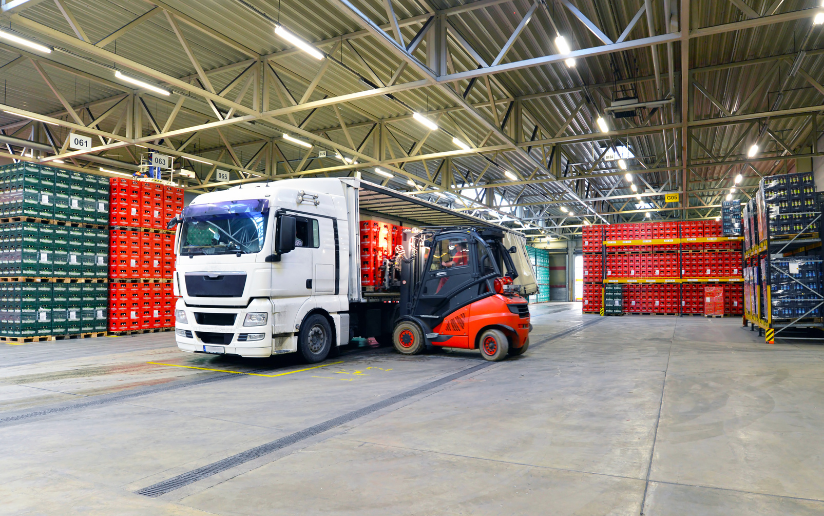Shipping customers’ products to a different state requires a thoughtful approach, especially during peak seasons. As a small business owner, the challenges of shipping products interstate can slow down sales. Whether you are experiencing a lack of transport facilities, higher shipping costs, unavailable drivers, or delays in shipping large volumes of goods to another state, it is not an end to effective logistics.
In the logistics industry, preparing for the busiest times of the year starts with utilising third-party providers offering interstate freight transport. Amongst all its benefits, investing time into preparing for certain things ahead of peak times is crucial. In this blog, we will uncover some tips for planning for high demands and coordinating with 3PL providers.
1. Analyse Historical Data and Forecast Demand
Start with analysing the past sales records. You can find them on point-of-sale systems, accounting software, or other software you use to record and track sales. Look at the previous year’s peak seasons to identify patterns in demand, customer orders, and higher sales.
Use this information to forecast the upcoming peak season’s requirements. Forecasting helps to seek assistance from interstate freight transport providers in advance. When they know about the requirements in advance, they will be able to deliver the best results in warehousing and transporting the products to the doorstep.
2. Optimise Inventory Management
Managing all the stock requirements during peak season is challenging for small to large businesses without additional resources. Therefore, having a third-party logistics provider ensures your customers never encounter difficulties when stock is unavailable.
Apart from maintaining and keeping high-demand items readily available, third-party logistics services offer warehouses with appropriate conditions. With the right climatic environment, stocks in their warehouses remain safe. Also, with their ability to handle products with pick bins and pallet systems, you can be worry-free about any damage, loss, or theft of your items.
Besides storing the right amount of products, the 3PL warehouse in Melbourne has workers who use modern technologies like RFID and inventory management software to track the quantities, locations, and movements of products in and out of the warehouse.
3. Strengthen Supplier Relationships
Maintain strong communication with suppliers to ensure they know your peak season needs. Discuss production schedules and delivery expectations well in advance. Consider buying products from different suppliers in different states to reduce the risk of shortages and delays, which are more costly during peak times.
4. Enhance Workforce Management
Hiring an additional workforce during busy months can increase the cost burden. Similarly, overburdening existing staff can lower their productivity levels. For this reason, bringing in a third-party logistic provider will be both a cost-effective and operational strategy.
Workers in the 3PL warehouse in Melbourne are experts in handling, storing, and securing your products. They also understand their roles and responsibilities and work on them consistently to prevent any confusion.
5. Utilise Advanced Technologies
Leverage technology to streamline operations. An inventory management system can be used to track stock levels, orders, sales, and deliveries even when 3PL providers are using their own in the warehouses.
Additionally, these systems should be combined with transportation management tools to oversee the routes, location, and quality control measures of 3Pl provider transportation services.
6. Focus on Transportation Efficiency
Transportation is often the backbone of logistics during peak periods. Review and optimise your transportation routes and schedules within different states. Consider consolidating shipments to maximise load capacity and reduce transportation costs. Collaborate with reliable transportation partners to use modern and large trucks and trailers, transportation capacity, and their ability to transport freight over long distances.
7. Implement Scalable Warehousing Solutions
Adapt your warehousing practices to handle increased volume. This might include reconfiguring warehouse layouts to optimise space usage and streamline the flow of goods. If necessary, explore options for temporary warehousing spaces to accommodate additional inventory without disrupting daily operations.
8. Prioritise Customer Communication
Clear communication with customers is vital. Tell them about order statuses, potential delays, and expected delivery times. This transparency can help manage customer expectations and reduce dissatisfaction. Use automated tools for regular updates to enhance customer service and support.
9. Prepare for Contingencies
Develop a strong emergency plan to address unexpected issues. This plan should include strategies for dealing with unexpected delays, equipment breakdowns, and sudden changes in demand. For the best case, it is wise not to rely on a single 3PL warehouse in Melbourne rather than having multiple in different regions. Regularly review and update the contingency plan to reflect current conditions and emerging challenges.
10. Review and Refine
After the peak season, conduct a thorough review of the performance. Gather feedback from customers, suppliers, and staff to identify areas for improvement. Use this feedback to refine your strategies for the next peak season, ensuring continual improvement and adaptation.
Final Words
Preparing for the peak season in interstate freight and warehousing requires careful planning and execution. Businesses can navigate the challenges of increased demand by analysing data, optimising resources, and employing efficient strategies.
This proactive approach enhances operational efficiency and ensures customer satisfaction during the busiest times of the year. Contact Carrabba’s Group for interstate freight transport and warehousing services that meet your operational demands.







